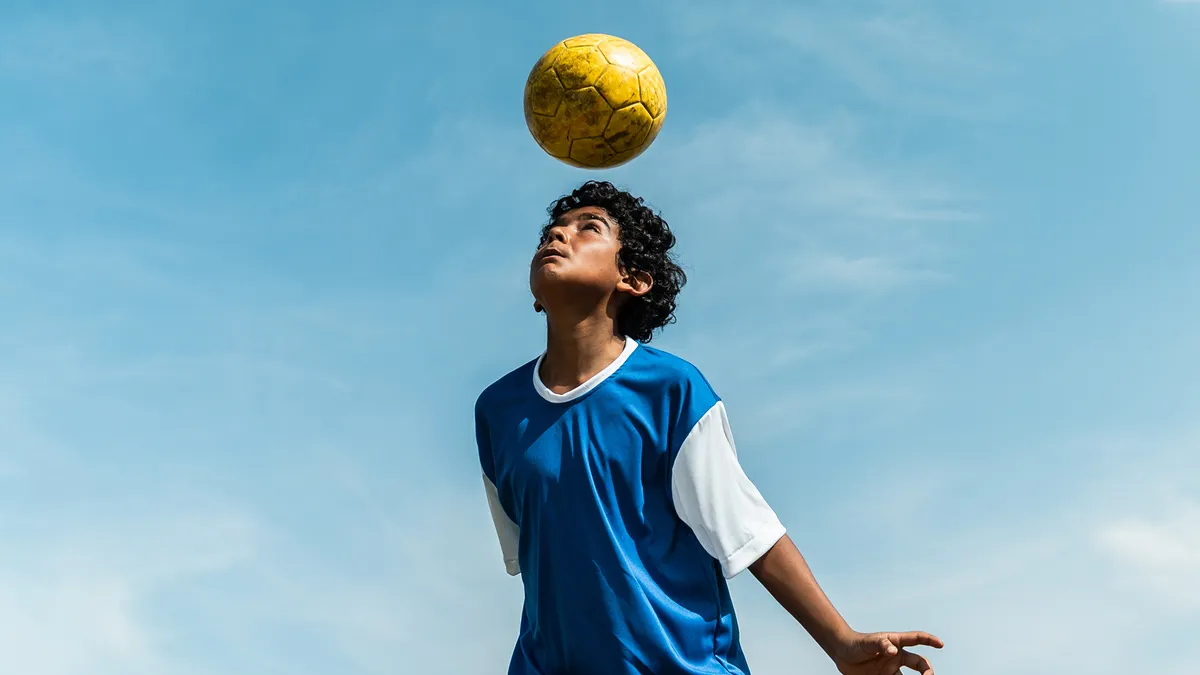The world’s biggest football event is more than a tournament– it’s a loyalty goldmine. As the 2026 games prepare to engage 5 billion people, marketers have a massive opportunity to shape the brand loyalties of Gen Alpha (born 2010-2024). This group, born into a world of streaming and hyperconnectivity, is expected to outnumber Baby Boomers in 2025, making them the largest consumer generation in history.
While the consumer habits of Gen Z are largely established, those of Gen A are still forming, which means their brand allegiances are up for grabs. So, how can marketers cut through the noise to connect with an audience that lives on screens? It’s about moving beyond traditional campaigns to build a new kind of connection; one that is tailored for youth, built on trust and personalized just for them.
This sporting event is not just a youth phenomenon; it’s about family.
Though young, Gen A’s influence is profound. Morning Consult research from 2023 indicates that by age five, children already influence household purchasing decisions, and 85% of parents of children aged 5–9 report that their kids request products they see in stores or advertisements. A 2025 Razorfish study adds that 61% of parents report that their offspring help decide what the family eats, and another 61% say children influence the car they buy.
Gen A drives influence, but millennial parents make the final calls. Sporting campaigns must resonate with both: appealing to modern-day values like sustainability, wellness and education, while creating immersive experiences that families will remember together.
Think sustainable swag tents with water stations and branded reusable water bottles, interactive “soccer science zones” where kids learn the physics behind kicking a ball, photo booths with custom filters and emojis and dance parties with your company’s mascots– whether that’s Mickey Mouse or Ronald McDonald. The key is to create moments that live on both in memory and on Instagram.
Why verification matters for Gen A engagement
By the 2026 tournament, many Gen As will be mid-teens. To connect authentically, brands must build trust with both them and their parents. Verified identity is key. It ensures that offers and promotions are responsibly targeted. Parents are far more likely to engage with brands that demonstrate care and mindfulness of their audience, which can unlock life-cycle relationships.
With it, marketers can evolve alongside this generation: offering student discounts during school years, tailored deals during early careers and recognition as they mature. This long-term view transforms fleeting interactions into enduring loyalty.
From omnichannel to influencers and AI: How to build a successful marketing strategy
Gen A moves fluidly across channels, and they expect brands to keep up by delivering consistent, seamless experiences. To capture their attention during the football games, brands must implement an integrated omnichannel strategy. This means creating a cohesive journey where every touchpoint, from the physical to the digital, reinforces your brand’s message. For instance, in-store signs and shelf tags could feature QR codes that unlock augmented reality (AR) experiences on a fan's phone, linking a physical product to a digital promotion. Similarly, out-of-home (OOH) activations—like interactive billboards or stadium kiosks—could drive fans to exclusive mobile content or social media filters, turning a passive viewing experience into an active, shareable moment.
Influencer partnerships should also be a core part of your strategy. Research shows that 71% of consumers trust creator content. Brands can collaborate with popular Gen A and Gen Z influencers to create content that drums up excitement for brands’ sporting event campaigns, covers on-site activations and recaps what they experience to keep the momentum going. For instance, a brand might partner with a creator to live stream an on-site activation and offer a unique code then create post-game content to highlight their event experience – keeping the conversation going and extending the life of the campaign. This type of collaboration leans into storytelling and content that is native to the platforms that Gen A uses most.
Layered on top of this foundation is AI, which enables marketers to deliver deeply personalized experiences at scale. Predictive offers, tailored content and intelligent audience segmentation will help brands stand out to Gen A, building genuine loyalty.
Loyalty beyond the tournament
The big event sparks global excitement, but true loyalty is cultivated long after the final match has been played. Verified data enables brands to re-engage with precision, staying relevant at key milestones like:
- Back-to-school season, when families and educators are preparing for the new academic year.
- Major holidays and family traditions, where shared experiences and creating memories together are at the heart of the celebration.
- Key community events like volunteer days with local non-profits that foster a sense of belonging and shared purpose.
- At the 2030 event, when Gen A is back for another chance to watch their team compete and experience more fun brand activations and experiences.
Loyalty isn’t about rewards points or discounts to Gen A and their families (although those are always welcome). It’s about empathy, recognition and purpose. The brands that extend the spirit of the event into daily life will stand apart.
Playing the long game
For Gen A, the 2026 football tournament is more than a sporting event; it’s their generational debut on the global stage. It offers brands a chance to be part of their earliest cultural memories and most influential family experiences.
Marketers who want to capture this loyalty must play the long game by blending verified data, personalization and omnichannel consistency to build lasting connections. The games may be the kickoff, but the real prize is winning Gen A’s loyalty for life.










